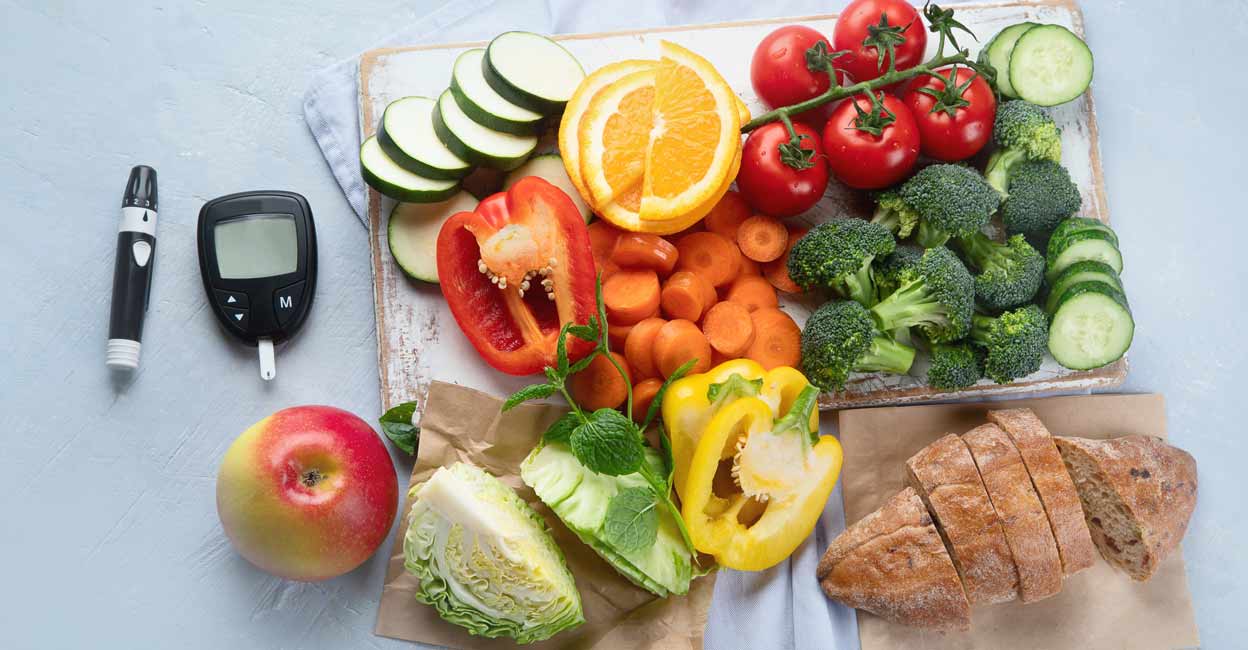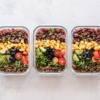Lifestyle
How to Control Diabetes with Food
Learn how to control diabetes through diet. This guide covers balanced eating, carbohydrate counting, meal planning, and key food choices.
Diabetes is a chronic condition characterized by high blood glucose (blood sugar) levels. This occurs either because the body doesn’t produce enough insulin (Type 1 diabetes), or because the body can’t effectively use the insulin it produces (Type 2 diabetes). Regardless of the type, effective management is crucial to prevent serious long-term complications affecting the heart, kidneys, eyes, and nerves. While medication and lifestyle factors like exercise play vital roles, food is arguably the most powerful tool in managing blood sugar and overall health for individuals with diabetes.
The relationship between food and blood sugar has been understood for centuries, but scientific advancements have refined our understanding of carbohydrates, glycemic index, and the role of various nutrients in diabetes management. Early dietary advice was often overly restrictive, but modern approaches emphasize balanced eating, portion control, and mindful consumption, empowering individuals to enjoy a varied diet while keeping blood glucose levels in check. This article provides a detailed “how-to” guide on using food as your primary ally in controlling diabetes.
Understanding the Basics: How Food Affects Blood Sugar
All the food we eat is broken down into glucose, which enters our bloodstream. Insulin, a hormone produced by the pancreas, helps glucose enter our cells for energy.
- Carbohydrates have the biggest impact on blood sugar levels because they are broken down directly into glucose.
- Proteins and Fats have a lesser and slower impact on blood sugar, but still contribute to overall calorie intake and can affect insulin sensitivity.
The goal of diabetic meal planning is to manage carbohydrate intake, choose nutrient-dense foods, and maintain stable blood sugar levels to prevent spikes and crashes.
Step-by-Step: Creating Your Diabetes-Friendly Eating Plan
Developing an effective food plan for diabetes involves several key steps, focusing on balance, portion control, and mindful choices.
Step 1: Consult Your Healthcare Team
Before making any significant dietary changes, it is absolutely essential to consult with your doctor, an endocrinologist, and/or a Registered Dietitian (RD). They can provide personalized advice based on your specific type of diabetes, current medications, health status, and lifestyle. This guide offers general principles, but individual needs vary greatly.
Step 2: Master Carbohydrate Counting and Quality
Carbohydrates are the main determinant of blood sugar response. Managing them is paramount.
- Learn Carbohydrate Sources: Identify foods rich in carbohydrates:
- Grains: Bread, rice, pasta, oats, cereals.
- Starchy Vegetables: Potatoes, corn, peas.
- Fruits: All fruits.
- Dairy: Milk, yogurt.
- Legumes: Beans, lentils.
- Sweets: Candies, cakes, sodas, sugary drinks.
- Understand Portion Sizes: It’s not just what you eat, but how much. Learn standard portion sizes for carbohydrate-containing foods. For instance, a serving of carbohydrates is roughly 15 grams.
- 1 small apple
- 1/2 cup cooked oatmeal
- 1 slice of bread
- 1/3 cup cooked pasta/rice
- 1/2 cup starchy vegetables
- Practice Carbohydrate Counting:
- Read Nutrition Labels: Pay attention to the “Total Carbohydrate” (and “Dietary Fiber”) on food labels.
- Use Measuring Cups/Food Scale: Initially, measure your portions to get a sense of typical carb content.
- Utilize Apps: Many apps (e.g., MyFitnessPal, Cronometer) can help you track carb intake and provide nutritional information for various foods.
- Focus on Complex vs. Simple Carbs (Glycemic Index/Load):
- Complex Carbohydrates (High Fiber, Low Glycemic Index/Load): These are digested slowly, causing a gradual rise in blood sugar. They are your best friends.
- Examples: Whole grains (oats, quinoa, brown rice, whole-wheat bread), non-starchy vegetables (broccoli, spinach, bell peppers), legumes (lentils, chickpeas).
- Simple Carbohydrates (Low Fiber, High Glycemic Index/Load): These are rapidly digested, leading to quick blood sugar spikes. Limit these.
- Examples: Sugary drinks, white bread, white rice, candies, pastries, processed snacks.
- Glycemic Index (GI): A rating system for how quickly foods affect blood sugar. Focus on low-GI foods.
- Glycemic Load (GL): A more practical measure, considering both GI and portion size.
- Complex Carbohydrates (High Fiber, Low Glycemic Index/Load): These are digested slowly, causing a gradual rise in blood sugar. They are your best friends.
Step 3: Prioritize Non-Starchy Vegetables
These are low in calories and carbohydrates, but rich in vitamins, minerals, and fiber. They can be consumed in larger quantities.
- How-To: Aim to fill at least half of your plate with non-starchy vegetables at most meals.
- Examples: Broccoli, spinach, kale, lettuce, cucumbers, tomatoes, peppers, green beans, cauliflower, mushrooms, asparagus.
Step 4: Include Lean Proteins
Protein helps with satiety and has minimal impact on blood sugar. It’s crucial for muscle maintenance and overall health.
- How-To: Include a source of lean protein in every meal and snack.
- Examples:
- Animal-based: Lean cuts of chicken, turkey, fish (salmon, cod, tuna), eggs, low-fat dairy (Greek yogurt, cottage cheese).
- Plant-based: Tofu, tempeh, lentils, beans, chickpeas, quinoa, nuts, seeds.
Step 5: Choose Healthy Fats Wisely
Fats are essential for health but are calorie-dense. Focus on healthy, unsaturated fats in moderation.
- How-To: Incorporate small amounts of healthy fats.
- Examples: Avocados, nuts (almonds, walnuts), seeds (chia, flax, sunflower), olive oil, fatty fish (salmon, mackerel).
- Limit: Saturated fats (found in red meat, butter, full-fat dairy) and trans fats (found in many processed foods).
Step 6: Plan Your Meals and Snacks
Consistency in timing and content helps manage blood sugar.
- Regular Meals: Aim for consistent meal times. Skipping meals can lead to low blood sugar (hypoglycemia) followed by overeating and spikes.
- Balanced Meals: Ensure each meal includes a mix of complex carbohydrates, lean protein, and healthy fats. This helps slow glucose absorption.
- Mindful Snacking: If you need snacks, choose options that balance protein and fiber (e.g., a handful of nuts, Greek yogurt with berries, vegetable sticks with hummus). Avoid sugary or highly processed snacks.
- Plate Method (Simple Visual Guide):
- Fill half your plate with non-starchy vegetables.
- Fill one-quarter of your plate with lean protein.
- Fill the remaining one-quarter with complex carbohydrates.
Step 7: Stay Hydrated
Water is crucial for overall health and helps the body process sugar.
- How-To: Drink plenty of water throughout the day.
- Avoid: Sugary drinks, sodas, fruit juices with added sugar. Opt for plain water, unsweetened tea, or coffee.
Step 8: Mindful Eating and Portion Control
Beyond what you eat, how you eat matters.
- Eat Slowly: Slower eating allows your body to register fullness, preventing overeating.
- Pay Attention to Hunger Cues: Eat when hungry, stop when satisfied, not stuffed.
- Read Labels: Always check nutrition labels for serving sizes and carbohydrate content.
Step 9: Monitor Your Blood Sugar
Regular blood sugar monitoring provides immediate feedback on how different foods affect you.
- How-To: Use your glucometer as advised by your doctor. Note down what you ate and how your blood sugar responded. This helps you identify personal triggers and effective food choices.
- Continuous Glucose Monitors (CGMs): For some, CGMs offer real-time data, providing immediate insights into food impacts.
Step 10: Adapt and Adjust
Diet management for diabetes is an ongoing process. Your needs may change over time.
- Review and Refine: Regularly review your food choices and blood sugar readings with your healthcare team.
- Flexibility: While consistency is good, avoid being overly rigid. Allow for occasional treats in moderation, planning for them by adjusting other meals or increasing activity.
- Seek Support: Join diabetes support groups or work with a diabetes educator for ongoing motivation and advice.
By adopting these dietary principles, prioritizing whole foods, managing carbohydrate intake, and working closely with your healthcare providers, you can effectively control your diabetes through food, leading to better blood sugar management and a healthier, more fulfilling life.
FAQ Section
Q1: What foods should people with diabetes absolutely avoid?
A1: While no food is strictly “forbidden” in moderation, people with diabetes should severely limit or avoid highly processed foods, sugary drinks (soda, sweetened juices), refined grains (white bread, white rice, pasta), pastries, candies, and foods high in unhealthy saturated and trans fats. These cause rapid blood sugar spikes and contribute to other health issues.
Q2: Is carbohydrate counting essential for managing diabetes?
A2: Yes, carbohydrate counting is one of the most effective strategies for managing blood sugar levels, especially for individuals with Type 1 diabetes and many with Type 2. Carbohydrates have the most direct and immediate impact on blood glucose. Learning to count carbs helps you match your food intake with your insulin or medication needs and plan meals more accurately.
Q3: Can I still eat fruit if I have diabetes?
A3: Yes, you can and should eat fruit! Fruits contain essential vitamins, minerals, and fiber. However, fruit also contains natural sugars (carbohydrates). The key is portion control and choosing fruits with a lower glycemic index (e.g., berries, apples, pears) over those with a higher glycemic index (e.g., ripe bananas, watermelon) in larger quantities. Always factor fruit into your daily carbohydrate count.
Q4: How important is fiber in a diabetes diet?
A4: Fiber is extremely important. Dietary fiber, especially soluble fiber, slows down the absorption of sugar, which helps to prevent blood sugar spikes. It also promotes satiety, aids digestion, and can help lower cholesterol. Good sources include whole grains, vegetables, fruits (with skin), legumes, nuts, and seeds.
Q5: What is the “plate method” for meal planning in diabetes?
A5: The plate method is a simple visual tool for creating balanced meals without extensive carb counting. It suggests: * Half of your plate: Non-starchy vegetables (e.g., broccoli, spinach). * One-quarter of your plate: Lean protein (e.g., chicken, fish, tofu). * One-quarter of your plate: Complex carbohydrates (e.g., brown rice, quinoa, whole-wheat bread).
Q6: Do I need to consult a doctor or dietitian before changing my diet for diabetes?
A6: Yes, absolutely. It is crucial to consult your doctor, an endocrinologist, or a Registered Dietitian before making any significant changes to your diet, especially if you are on medication. They can help you create a personalized plan that is safe, effective, and tailored to your individual health needs and goals.



















